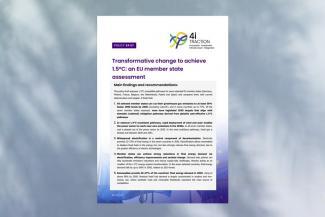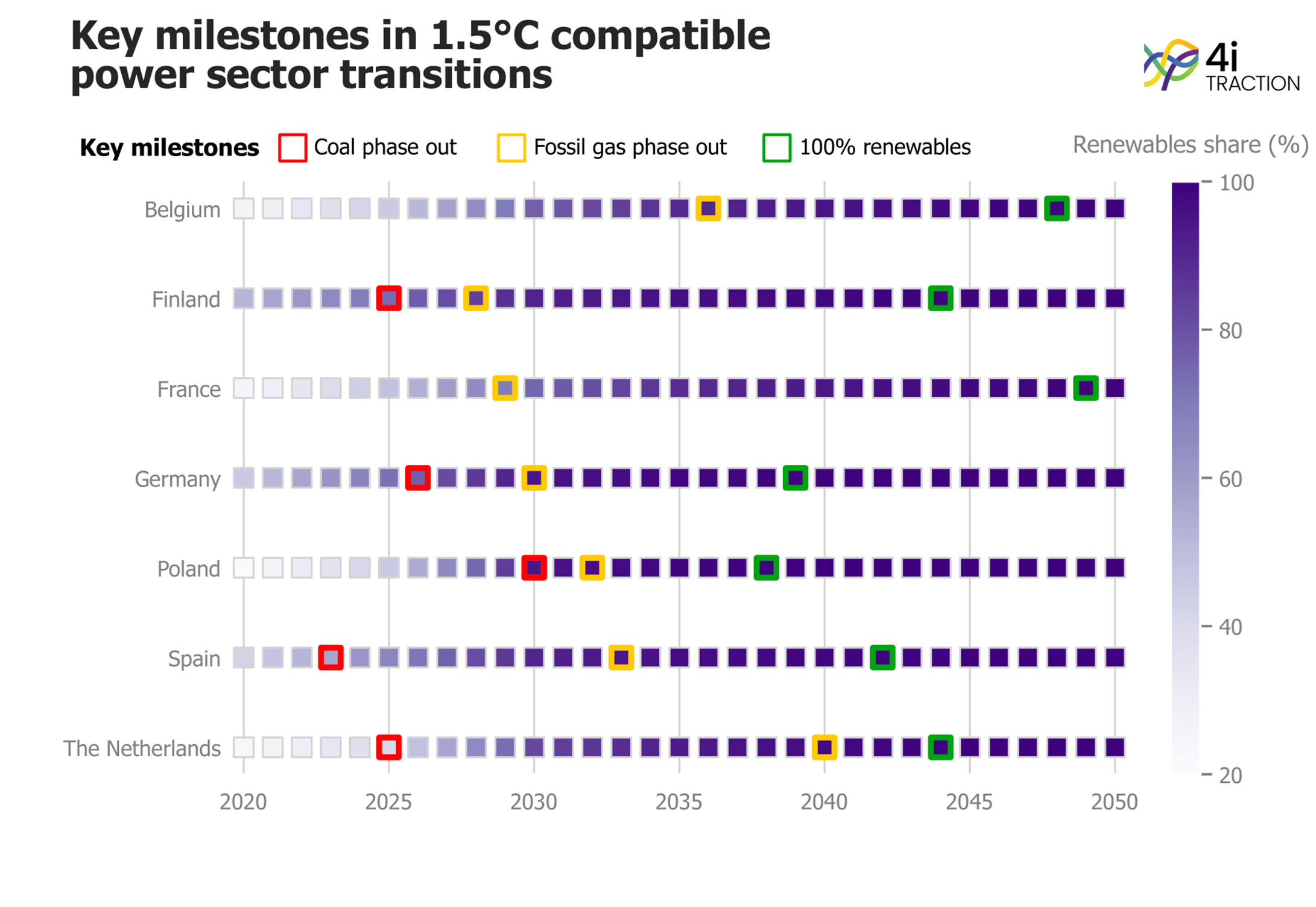
Citation:
4i-TRACTION (2023): Transformative change to achieve 1.5°C: an EU member state assessment. 4i-TRACTION Policy Brief. Climate Analytics. Updated version_v2; Berlin.
Transformative Change to Achieve 1.5°C: An EU Member State Assessment
This policy brief assesses 1.5°C compatible pathways for seven selected EU member states and compares them with current national plans and targets.
For selected EU member states (Germany, Finland, France, Belgium, the Netherlands, Poland and Spain), the assessment finds that:
- All selected member states should cut their greenhouse gas emissions to at least 47% below 1990 levels by 2030 (excluding LULUCF), and in some countries up to 76%. Of the seven member states assessed, none have introduced sufficient policies to align with domestic (national) mitigation pathways derived from globally cost-effective 1.5°C pathways.
- In national 1.5°C-consistent pathways, rapid deployment of wind and solar enables the power sector to reach near-zero emissions in the 2030s. In all seven member states, coal is phased out of the power sector by 2030. In the most ambitious pathways, fossil gas is phased out between 2028 and 2040.
- Widespread electrification is a central component of decarbonisation. Electricity provides 53-73% of final energy in the seven countries in 2050. Electrification allows renewables to displace fossil fuels in the energy mix, but also strongly reduces final energy demand, due to the greater efficiency of electric technologies.
- Member states can achieve strong reductions in final energy demand via electrification, efficiency improvements and societal change. Demand-side policies can help accelerate emissions reductions and reduce supply-side challenges, thereby acting as an ‘enabler’ of the 1.5°C energy-system transformation. In the seven selected countries, final energy demand falls by up to 54% in 2050, relative to 2019 levels.
- Renewables provide 33-82% of the countries’ final energy demand in 2030, rising to above 90% by 2050. Residual fossil fuel demand is largely concentrated in aviation and non-energy use, where synthetic fuels and renewable feedstocks represent the main source of competition.

The policy brief is available for download.
Read the underlying report here.